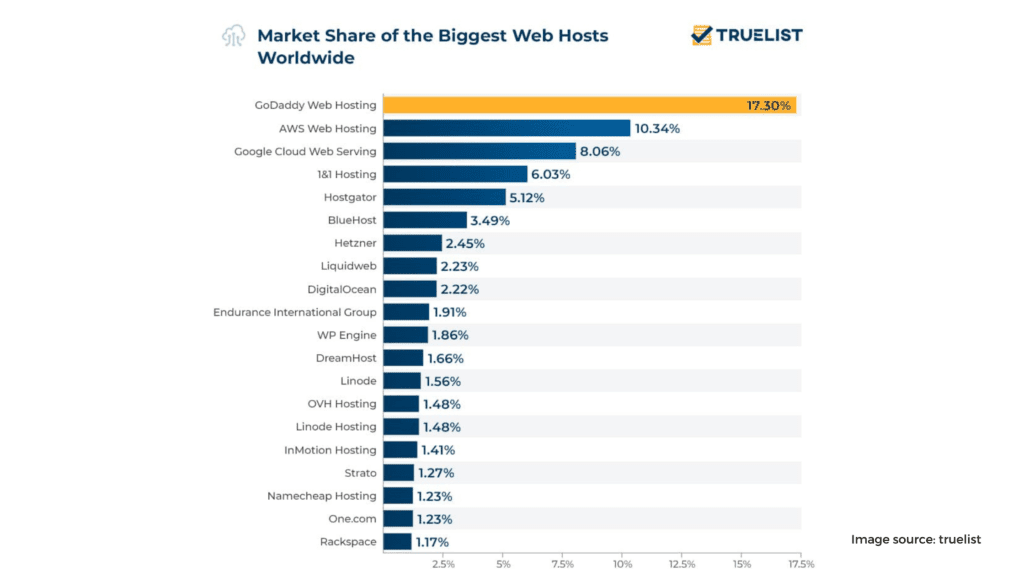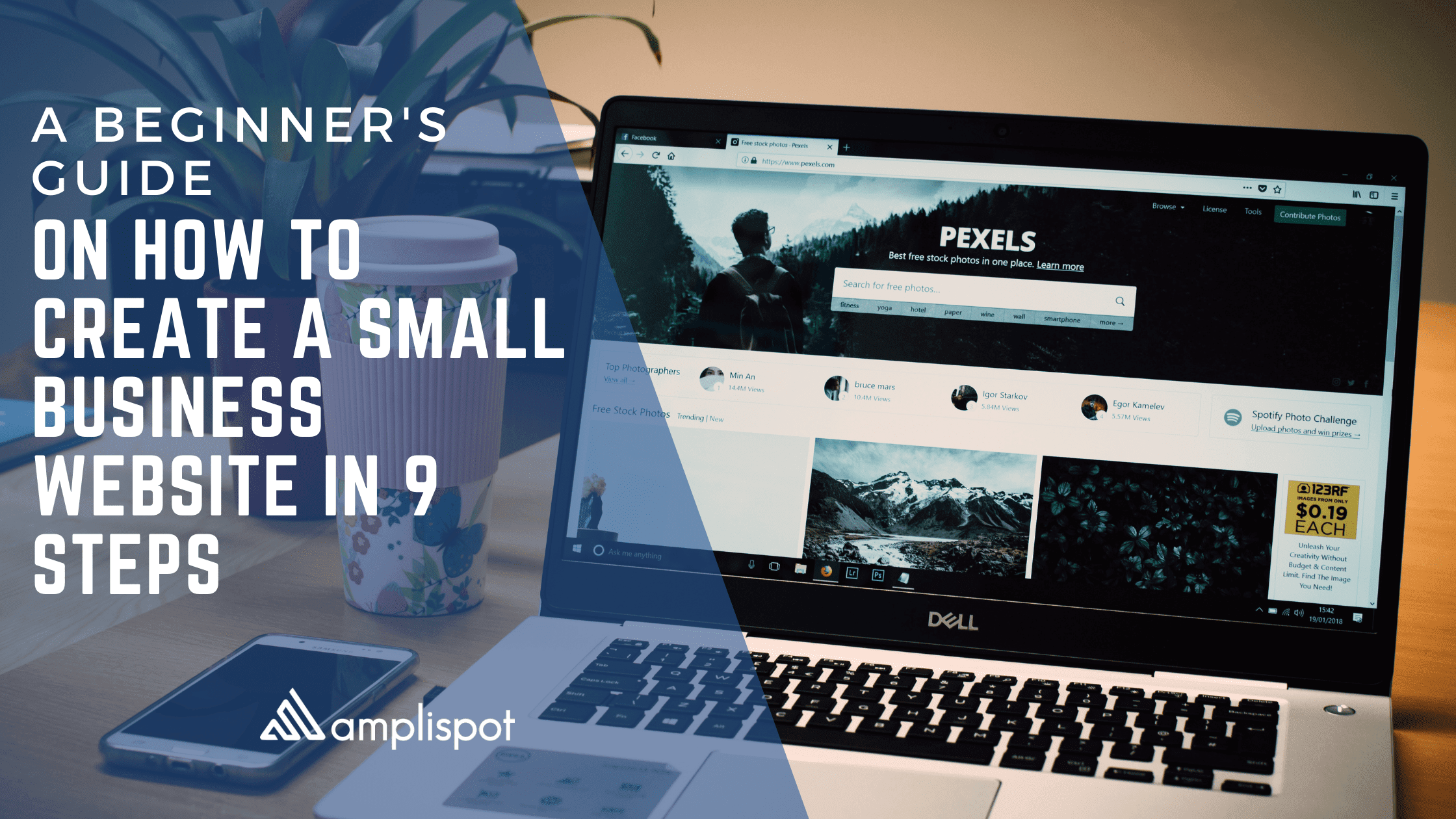Running a small business may prevent you from outsourcing certain activities. Hiring a web designer, for example, might be costly if you want to establish an online presence. However, creating a small company website on your own can be difficult.
Fortunately, this isn’t as difficult as it may appear. Many beginning-friendly website builders are available that will enable you to build a stunning site without any prior experience. Furthermore, many of these tools are quite affordable.
This post will walk you through how to create a small company website in 9 easy steps. Let’s get started!
Things to consider when creating a small business website
There is no “one-size-fits-all” solution when it comes to building a website. Before you start, consider your objectives so that you can use design elements and tools to meet them.
A dentist’s clinic, for example, would require a completely different website than an architecture firm. The manner in which you want to communicate with the public about a physical location or conduct online sales also has an impact on how your site should appear.
Ask yourself the following questions as you begin developing your small business website:
- What information do you need to communicate to your website’s visitors?
- After seeing your site, what actions do you want visitors to perform (e.g., purchase items online, visit a physical location, or request a quotation)?
- How will you showcase your items or services?
- Do you require an online portfolio of past work to illustrate your value to potential clients or consumers?
You should also consider the anticipated amount of traffic to your website. If you want to sell items online, you may receive far more attention than a local company that relies on in-person sales. Your needs in this area will determine which platforms and hosting providers are appropriate for your site.
How to create a small business website in 9 steps
Once you’ve established a clear objective for your website, you may begin to develop it. Here are nine important phases to take in order to start developing your company’s online presence:
Step 1: Choose your website building platform
Ideally, you should choose a user-friendly solution that will allow you to create a website without any technical knowledge. Here’s what we suggest for small businesses:
- WordPress. WordPress is available in two flavors: WordPress.org, which gives you access to the finest features and more control over your website, and WordPress.com, which provides a free version of the software with limitations on functionality. You’ll need to book hosting separately (more on that later).
- Hosted website builders. If you’re looking for a single solution that does it all, Squarespace or Wix are two reputable website builders to consider. These systems come pre-installed with complete website designs that you can modify with a drag-and-drop tool. You won’t need to hire another firm to manage your hosting, but you will have less freedom in terms of design.
The fees associated with hosted website builders are dependent on the plan you pick. If you select the Squarespace Business package, for example, it will set you back $18 per month.
WordPress is free to utilize and runs on an open-source software foundation, making it entirely free. You will be responsible for sourcing a web hosting service, which is an additional cost.
Step 2: Pick your domain name

You should choose a domain name that is consistent with your company’s name. If you’re stumped for a name, there are plenty of online generators that might help, including DomainWheel:
Here are some factors to consider while selecting your website address:
- Make careful to spell your name correctly.
- Keep it as brief as possible.
- Add keywords that are relevant to your company.
We also have some articles that go into further depth about selecting a domain name:
Don’t be concerned about purchasing your domain name until you’ve completed the sign-up for hosting (in the next step). Alternatively, if you’re using a tool like Squarespace or Wix to host your site, you can also purchase your domain name through these tools.
Step 3: Find your hosting provider

If you choose to go with an all-in-one website builder, you may ignore this step. WordPress users should continue reading.
There are a number of wonderful hostings for beginners. Our top pick is Bluehost, which WordPress.org officially advises. For a variety of reasons, we suggest Bluehost. For example, the following features are included in its hosting packages:
- 24/7 customer service and support
- A free domain name for the first year of your plan
- A free SSL certificate
- In-built security features
- Access to a user-friendly dashboard
- WordPress optimization features
The most basic plan, which is also the most cost-effective, costs just $2.75 per month. Small websites may be hosted on this package for a long time before needing to upgrade.
Step 4: Install the WordPress software
You can also skip this procedure if you want to utilize an all-in-one website builder like Squarespace. If you’d rather use WordPress and a hosting service, you’ll need to install the CMS software.
Bluehost is well-known for its simple interface and one-click WordPress installation. You can quickly and simply set up WordPress with this hosting service.
Select Add Site from the drop-down menu and then click on it. From this screen, choose Add New Site > Create a New Site:
When you go to your WordPress dashboard, click the Bluehost Install button. After that, both of these options should appear:
You’ll be asked to fill out a website name and tagline after you’ve created the account. When you’re ready, hit Next:
After that, you’ll need to provide your email address and establish a password for the new WordPress installation. The installer will then begin downloading and installing WordPress software.
Now that the pages are finished, go to My Sites again and log in using your WordPress credentials. Underneath your website name, click Manage Site, then Log in to WordPress.
Depending on your chosen hosting company, this procedure may differ. As a result, we recommend consulting your host’s official documentation. You could also consult our comprehensive guide on how to set up WordPress on your site.
Step 5: Select a theme or template
Both WordPress and Squarespace provide a wealth of templates (or themes) that you can quickly modify. A number of them are also free to use.
You can access free theme alternatives from your WordPress dashboard by going to Appearance > Themes:n
You can alter any WordPress theme after you’ve installed and activated it. A premium WordPress business theme, on the other hand, might be a good choice. These items frequently include features such as pre-built portfolios, e-commerce sites, and page builder integration.
Squarespace, on the other hand, has templates available right on its site. After you’ve chosen one that you like, click Start With This Design to preview it:
Finally, you’ll find yourself in the editing section, where you may alter almost every part of your website. We propose that you review any modifications on the front end to ensure they look nice.
Step 6: Install plugins or extensions
Plugins and extensions (in WordPress and other page builders) can provide new capabilities to your website. Unless you use these technologies, you could struggle to get the most out of your small business site.
Squarespace offers a large selection of add-ons. You can access the Squarespace extensions catalog right from your dashboard. WordPress has a plugin library containing almost 60,000 plugins.
With so many choices available, it’s easy to fall into the trap of installing as many plugins or extensions as possible. However, doing so might slow down your site and have an adverse impact on its performance.
As a result, we propose concentrating on plugins/extensions that tackle the following problems:
- Search engine optimization and user experience. The majority of website owners would want their sites to load quickly. As a result, you might wish to think about optimizing your site’s performance with caching and database improvement. The WP-Optimize plugin can handle everything. Optimole is a great place to start if you’re looking for the best in breed image optimization.
- Security. We recommend using a plugin to guarantee that your site is safe from spam, hackers, and other bad actors.For example, Sucuri Security is an outstanding all-in-one solution that offers both a free and a premium version.
- Backups. Backups are critical for maintaining the security of your website. As a result, you may want to use a plugin like Updraft Plus to handle these crucial chores.
- Search Engine Optimization (SEO). Small business webpages that are optimized for search engines can be more visible and help you attract new consumers. To assist with content optimization, we recommend utilizing the Yoast SEO plugin.
- E-commerce. You will need an e-commerce plugin to handle your sales if you have an online store. WooCommerce is one of the finest WordPress plugins for running an online shop. Here’s how to set up and use WooCommerce properly.
We recommend plugins or extensions with high ratings and frequent updates when picking them. You may also look at other people’s opinions to see whether the plugin will work for you:
You may use our instructions on how to install WordPress plugins, or you may read the information on installing extensions on Squarespace.
Step 7: Add your content
You will most likely want to add content as soon as possible after you have created your website. Before you do so, it’s a good idea to have a basic plan in mind.
Most business websites will need the following:
- The homepage is the primary impression that your visitors see when they come to your site. It should give a quick overview of your services. Furthermore, it should feature direct access to other areas.
- The main goal of the Services, Products, or Portfolio page is to provide an overview of what you offer. This is where you will exhibit your work and explain what you have to offer to customers or clients.
- On the About page, you’ll include your tale or information about your team.
- In the contact page, you should include a contact form and ask consumers to get in touch with you if they have queries.
- The core goal of any blog is to quickly and effectively share information. For many companies, it’s a must-have nowadays. It’s also an excellent content marketing tool.
WordPress and other popular website builders allow you to quickly produce websites and publish blog entries. As a result, you have complete control over the content on your site.
Step 8: Optimize your business website for search engines
You still have to ensure that information is discoverable once it’s available online. SEO may assist with this.
It is the process of improving your content in order to make it more likely to appear on search engine results pages (SERPs). There are a few basic guidelines you should remember, such as:
- Using appropriate keywords in your pages and posts
- Including internal and external links on your website
- Picking a responsive design so that your content works on all devices
- Optimizing your website for speed
- Using post names in their permalinks
If you pick WordPress as your website platform, you may install an SEO plugin like Yoast SEO to analyze your material and offer suggestions for improvement:
Step 9: Publish your website
You can retain your site’s privacy while it’s being constructed and then release it when it’s finished. With WordPress, you will be immediately available to the public after you’ve installed the program on your hosting account.
Regardless, there are a few last-minute checks you may want to perform before launching your website:
- Make sure your website is mobile-friendly to ensure that it’s readable
- Read through your content to verify that everything is correct
- Remove any filler content from your template or theme
If you’re interested in moving forward with your new site, consider contacting past clients to notify them that you’ve now launched. You may also use social media or email to promote your website.
Conclusion
If you want to appeal to a wider audience, you’ll need an internet presence. If you’re a small company owner, outsource web developers may not be in your price range. Fortunately, thanks to simple platforms like WordPress, Squarespace, or Wix, you may construct a website in no time and save money as a result.






